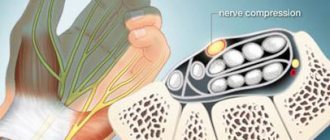In our age of overabundance of information, stress and crazy speeds, the problem of mental health, or more precisely, ill-health, is becoming almost the most important.
As you know, mental health, the same “healthy spirit” that ancient healers loved to talk about, is an integral component of health in general. Alas, the features of modern life make us extremely vulnerable to various mental disorders. And the disease does not distinguish whether the person in front of it is young or old, man or woman.
In terms of prevalence, mental health disorders are now among the leaders after cardiovascular diseases and cancer. According to WHO, more than 560 million people on the planet already suffer from various mental illnesses. And almost every second person is in danger of contracting a mental illness during their lifetime.
Very often, serious psychoneurological diseases such as neurosis and psychosis .
1 Diagnosis and treatment of neurosis
2 Diagnosis and treatment of neurosis
3 Diagnosis and treatment of neurosis
What lies behind the terms neurosis and psychosis?
We are so used to throwing around the words “hysterical”, “neurasthenic”, “psychopath” that we often forget that we use medical terms as curses or even ridicule. Meanwhile, there is nothing funny in these words.
Neurosis
Neurosis can be briefly described as follows:
- This is nervous exhaustion, a long-term chronic disorder that can develop in a person against the background of stress or a traumatic event.
- The personality of a patient suffering from neurosis usually does not undergo major changes. The person maintains a critical attitude towards the disease; he can control his behavior.
- As a rule, neurosis is manifested by vegetative, somatic and affective disorders.
- This is a reversible (curable) disease.
The most common types of this disease are:
- neurasthenia (asthenic neurosis, fatigue syndrome);
- hysteria (hysterical neurosis);
- various phobias (fears, panic attacks) and obsessive states (obsessive neurosis).
One of the main reasons for the formation of neurosis is stress in the broadest sense of the word, be it a childhood trauma, an unfavorable climate in the family, a crisis at work, nervous strain, interpersonal conflict or emotional shock.
According to medical statistics, the state of neurosis is familiar firsthand to 10-20% of the population of our planet, and approximately 5% of the world's inhabitants suffer from various types of psychosis.
Psychosis
Speaking about psychosis, it is necessary to note the following:
- This is a mental disorder characterized by inappropriate human behavior and an atypical reaction to events and phenomena.
- It manifests itself as mental disorders, in particular, disturbances in the perception of reality (hallucinations, delusions).
- It develops unnoticed by the patient and may be a consequence of pathologies of the endocrine and nervous systems.
- Capable of completely changing the patient's personality.
- This is a difficult to cure disease.
Psychoses according to their origin are usually divided into:
- Endogenous , that is, associated with internal causes (somatic diseases, hereditary mental disorders, age);
- Exoorganic , caused by external factors (infections, intoxication, etc.) or associated directly with a violation of the structure of the brain (trauma, hemorrhage, neoplasms, etc.).
The first group includes:
- affective insanity;
- senile (senile);
- affective;
- schizophrenic;
- epileptic;
- symptomatic psychosis, etc.
The exogenous group includes:
- reactive acute psychosis;
- intoxication;
- infectious;
- alcoholic psychosis, etc.
1 Biofeedback therapy in the treatment and diagnosis of psychosis
2 Biofeedback therapy in the treatment and diagnosis of psychosis
3 Biofeedback therapy in the treatment and diagnosis of psychosis
The doctor's helplessness regarding these symptoms is reflected, among other things, in the variety of concepts that refer to these complaints. We are talking about a functional disorder of individual organs or organ systems, and any tissue changes, as a rule, are not detected. Unlike conversion symptoms, an individual symptom has no specific meaning, being a nonspecific consequence of impaired bodily function. F. Alexander [12] described these bodily manifestations as accompanying signs of affect without the nature of expression and designated them organ neuroses. Psychosomatic disorders in a narrower sense (psychosomatosis). Psychosomatic disorders are based on a primary bodily reaction to a conflict experience, associated with morphologically established changes and pathological disorders in organs. The corresponding predisposition may influence the choice of organ. Historically, this group includes classic pictures of the following psychosomatic disorders:
- bronchial asthma
- ulcerative colitis
- essential hypertension
- neurodermatitis
- rheumatoid arthritis
- duodenal ulcer
Along with traditional psychotherapeutic techniques in the treatment of patients with neuroses and psychosomatic disorders, in recent years the method of biofeedback (BFB) has become more widespread. The biofeedback method (adaptive biofeedback method, biorehabilitation, operant conditioning method, etc.) is a modern rehabilitation method aimed at activating the body’s internal reserves in order to restore or improve physiological skills [3]. In psychotherapeutic practice, the biofeedback method can be used in two fundamentally different ways: either as a means for acquiring physical self-regulation skills in order to prevent the emergence of psychosomatic or neurotic disorders, or, if the patient suffers from neurosis or psychosomatic disease, as a means for treating functional disturbances in the corresponding system of physiological reactions. The effectiveness of biofeedback training is highest in patients who really cannot relax, even if they consciously want to. Such persons often do not even notice how constantly tense they are. With the help of biofeedback, this overstrain can be brought to their consciousness and this objective information will allow them to form the skill of voluntary relaxation. Like any therapy, treatment using biofeedback begins with a detailed history, supplemented by explanations of the essence and principle of action of biofeedback training (first session). At the same time, it is necessary to especially emphasize that we are talking about acquiring self-control skills, in which the body learns in a certain way how to help itself independently. Emphasizing the patient's active role also increases motivation to regularly perform the prescribed home exercise. The second session is designed to study the psychophysiological pattern of reactions exhibited by this patient in connection with the problem behavior to be treated. To record the pattern of psychophysiological reactions, the patient is equipped with various measuring sensors that record the necessary physiological functions. Then the patient is asked to sit quietly with his eyes closed for 5 minutes. This period of time serves to record the initial values. After this, the patient should try to relax for about 5-10 minutes. This demand usually has the opposite effect, the patient begins to tense up, which changes the measured values accordingly. Sitting quietly without doing anything specific is, especially for those suffering from symptoms of stress, already a serious psychological burden. After a period of relaxation, the actual stress test is performed to measure the patient's excitability and subsequent calmness. It is not entirely easy to create stress in an artificial situation, so in most cases various interventions are performed that create a certain physiological arousal. For example, they approach a patient and suddenly clap their hands over his ear. You can also suddenly leave the room without saying anything, let the patient wait for about a minute and then re-enter. As a mental challenge, you can offer a counting task. For example, starting from 1000, continuously subtract the number 19. Then they periodically say “stop” and the patient must name the intermediate result. As other stressful situations, Jung's associative experiment, or simply the presentation of irritant words, or the development of ideas that have a certain relationship to the problem behavior being the object of treatment, are also suitable. First of all, the intensity of reactions and the course of subsequent rest are of diagnostic importance. The speed of reactions primarily depends on the individual, i.e. from the constitution, which generally determines fast or slow response. Chronically stressed individuals often exhibit relatively quick reactions but slow recovery. Minimal or no reaction to sensory or mental stimuli occurs in patients who are emotionally inhibited, withdrawn, and have difficulty making contact. Very fearful people, on the contrary, in most cases show strong fluctuations in measured values, which also occur regardless of the presentation of stressful stimuli. The actual therapy begins in the third session. The goal of biofeedback training is the awareness of the event to be controlled, which requires meaningful information feedback. Like psychotherapy in general, this first phase of training very often leads to a certain improvement. Absorption of attention by the reception of new information can distract and, thereby, disrupt stereotypical patterns of behavior. As a next step, it is necessary to try, through appropriate training, to voluntarily control those body functions that should be influenced (DAS-BOS, EMG-BOS, EEG-BOS). DAS-BOS – teaching the patient the skill of diaphragmatic relaxation breathing using an original biofeedback technique for cardiac respiratory arrhythmia in order to normalize the activity of the cardiorespiratory system and establish a balance between the sympathetic and parasympathetic branches of the autonomic nervous system. EMG-BFB – teaching the patient to voluntarily reduce increased muscle tone. EEG-BFB is biofeedback of brain potentials aimed at increasing the intensity of the EEG alpha rhythm and/or reducing the beta rhythm. The total duration of treatment is on average 15 sessions lasting 30-40 minutes each. Finally, during generalization, acquired control must be transferred from the training situation in the laboratory to a normal life situation. This process can be facilitated by adding “homework” - using the skill of diaphragmatic relaxation breathing (for example, before bed), relaxation exercises such as autogenic training, as well as by collecting and recording changes over a long time. Recording long-term changes reflects progress and in turn acts as feedback. It is noted that autogenic training in combination with conditioned reflex methods, including the biofeedback method, gives excellent results. Preliminary training in auto-training and its use in biofeedback sessions is most indicated for neurasthenia (general neurotic symptoms; neurovegetative and neurosomatic syndromes with higher effectiveness in the case of predominance of sympathetic tone; sleep disorders, especially falling asleep, states of anxiety and fear, sexual disorders), as well as to stabilize remissions and prevent relapses of neuroses. In neurotic and psychosomatic disorders, there are no specific changes in the electroencephalogram, therefore, the neurophysiological interpretation of EEG changes as a result of long-term psycho-emotional stress, leading not to the destruction of brain tissue, but to the disintegration of functions, a decrease in adaptive capabilities and, as a consequence, to maladaptive disorders, represents certain difficulty. Maladaptive disorders are based on violations of cortical-subcortical relationships. In pathology, these relationships are disrupted, which leads to destabilization of neurodynamic processes. The greater the degree of this destabilization, the less pronounced the alpha component, the greater the severity of beta, theta and delta components. In this regard, alpha-stimulating training has received the most widespread use in the treatment of maladaptive disorders using the EEG biofeedback method. The effectiveness of this approach is well reflected in the literature [1, 2, 9-11].
- Ayvazyan T.A. Relaxation therapy using biofeedback in the treatment of patients with hypertension // Biofeedback-1. – Novosibirsk: Science, 1988. – P. 133-142.
- Vereshchagina A.A., Kaydanova E.A. The importance of feedback in the adaptive regulation of pathological bioelectrical activity of the brain. Physiol. person. – 1981. – No. 4. – P. 579-585.
- Ivanovsky Yu.V., Smetankin A.A. Principles of using the biofeedback method in the system of medical rehabilitation // Biol. Feedback. – 2000. – No. 3. – P. 2-9.
- Karvasarsky B.D. Psychotherapeutic encyclopedia. – St. Petersburg: Peter Kom, 1998. – 752 p.
- Lakosina N.D., Trunova M.M. Neuroses, neurotic personality development. – M.: Medicine, 1994. – 192 p.
- Luban-Plozza B., Peldinger W., Kröger F., Pederach-Hofmann K. Psychosomatic disorders in general medical practice. – St. Petersburg, 2000. – 287 p.
- ICD-10. Classification of mental and behavioral disorders: Research diagnostic criteria. – Geneva: World Health Organization., 1998. – 208 p.
- Popov E.A. About some unclear and controversial aspects in the problem of neuroses // Journal. neuropathol. and a psychiatrist. – 1954. – No. 5. – P. 380-388.
- Svyatogor I.A. Some aspects of neurophysiological mechanisms of biocontrol of brain potentials in neuroses // Biofeedback-1. – Novosibirsk: Science, 1988. – P. 108-119.
- Svyatogor I.A., Mokhovikova I.A. On the issue of cortical-subcortical relationships in the treatment of patients with maladaptive disorders using the method of biofeedback using an electroencephalogram // Biol. Feedback. – 2000. – No. 4. – P. 15-19.
- Svyatogor I.A., Mokhovikova I.A., Nikitina S.B. Features of the interaction of neurophysiological and neuropsychological factors in the process of biocontrol of brain potentials in patients with psychosomatic disorders // Journal. ecol. people – 1994. – No. 1. – P. 37-40.
- Alexander F. Psychosomatische Medizin. – Berlin: De Cruiter, 1951.
About the Center - Practical activities - Psychosomatic disorders - Psychosomatic disorders and neuroses
Signs of psychosis and neurosis
Symptoms of psychosis
Recognizing warning signs is sometimes not easy, but you should pay close attention to any changes that appear in the character and habits of a loved one.
Characteristic symptoms of psychosis are:
- decreased performance or febrile activity;
- mood swings;
- irritability, suspicion;
- desire for self-isolation;
- unexplained change of interests;
- sleep disturbances, decreased appetite;
- careless attitude towards one's appearance;
- increased vulnerability and other atypical reactions to events and phenomena;
- impaired coordination of movements;
- incoherent speech;
- hallucinations, delusions.
Symptoms of neurosis
It is quite difficult for a non-specialist to identify a nervous disorder. And yet the clinic of neurosis has characteristic features.
Neurosis may be indicated by:
- decreased cognitive abilities;
- depressed mood, tearfulness;
- self-doubt, low self-esteem;
- irritability, dissatisfaction;
- frequent changes of mood;
- obsessive thoughts;
- fixation on bad news and events;
- unmotivated anxiety states;
- poor appetite, disturbances in the gastrointestinal tract;/li>
- cardiovascular symptoms;
- insomnia and other sleep disorders;
- violations in the sexual sphere;
- increased sensitivity to noise, light, vibrations, etc.
1 Diagnosis and treatment of neurasthenia
2 Diagnosis and treatment of neurasthenia
3 Diagnosis and treatment of neurasthenia
Children's fears and facial tics are also symptoms of neurosis.
Very often in everyday life people confuse the concepts of “neurosis” and “neurasthenia”. Let us repeat once again: neurasthenia is a type of neurosis, one of its most common forms.
Characteristic symptoms of neurasthenia are:
- decreased intellectual abilities;
- dizziness, headaches (the so-called neurasthenic helmet);
- increased fatigue;
- sleep disorders;
- disruptions in the gastrointestinal tract;
- chest pain;
- mood swings;
- low self-esteem;
- decreased potency and libido.
Characteristics of psychosis
Psychosis is a serious mental illness that is often not cured, but only corrected by psychiatrists.
Depending on the chronological pattern, manifestations of psychosis are divided into episodic or periodic.
Episodic psychoses
Psychoses characterized by movement disorders, affective disorders and pseudomanic states.
Movement disorders manifest themselves in the form of stupor. Patients freeze in unnatural positions, with wide-open eyes and an expression of suffering on their faces. Stupor may be replaced by increased motor or speech activity. Aggression towards others.
Affective disorders most often manifest as dysphoria. Patients are embittered, withdrawn, tearful, and prone to monotonous lamentations. Less common are fears, depression or euphoria, accompanied by illusory disorders or hallucinations.
Periodic psychoses
Pseudomanic states manifested by senestopathies, rough monotonous pranks, hypochondriacal statements. Visual hallucinations, delusions of jealousy or persecution are possible.
The symptoms of psychosis are extremely broad. A wide variety of disorders may be present in mild or severe forms. Namely:
- Emotional disorders . Distortions of emotional reactivity (quantitative and qualitative changes in emotions), the sensory sphere (progress or regression of feelings) and mood (its decrease or increase). Patients experience higher feelings (personal dignity, aesthetic satisfaction) or, on the contrary, lower ones (arising from instincts or basic needs). They fall into depression and melancholy or experience euphoria and ecstasy. Sharp transitions from one state to another, emotional inadequacy, ambivalence, parapathy or parathymia are possible.
- Disorder of consciousness . Distortion of perception, memory and abstract thinking. Illusions and hallucinations. Patients cannot build logical connections between words, make unexpected conclusions, attach random meaning to certain concepts, and distort phrases without new semantic content. They cannot remember recent events, but they reproduce distant ones in their memory. They become disoriented in time, space and their own personality. Hallucinations are mainly visual: polyopic, hemianoptic, microscopic, autoscopic, Charles Bonnet type. Black and white or color. Extracampal, scene-like and others.
- Psychomotor disorders . Patients speak and move too slowly or too quickly. The transition from hypo to hyperactivity is unpredictable. The quadrigeminal reflex is strengthened.
- Sleep-wake rhythm disorders . Patients experience drowsiness during the day, but have difficulty falling asleep at night. They sleep restlessly and have nightmares at night, which after waking up can turn into hallucinations. In severe cases, inversion of the sleep-wake rhythm or total loss of sleep is possible.
Neuroses differ significantly from psychoses. In addition, the forms of these disorders differ from one another. But occasionally in medical practice we encounter psychoneurosis, which combines the symptoms of two diseases.
Do not self-medicate. Symptoms are often blurred, which complicates the diagnostic process. Only a qualified specialist will help you find peace of mind.
Treatment of neuroses and psychoses
Only a neurologist (psychoneurologist, psychotherapist, psychiatrist) who has undergone appropriate training and has sufficient practical experience in helping patients with neurological and mental disorders can conduct a competent diagnosis of the disease, identify its causes and offer adequate treatment.
Treatment of psychoses and neuroses (including treatment of neurasthenia) is, as a rule, a whole complex of measures that includes many stages.
So, a combination of the following methods helps to achieve a good result:
- drug therapy;
- phytotherapy;
- psychotherapy;
- hardware treatment;
- water procedures;
- reflexology;
- special gymnastics;
- therapeutic diet, etc.
A positive attitude, the right environment, a normal family environment, maintaining a healthy lifestyle, maintaining a work and rest schedule, and eliminating “stress-forming” factors (even changing your place of work or area of residence) are extremely important for recovery.
Causes of neurosis
People tolerate stressful situations differently, react differently to what is happening around them, so the reasons for the development of neurotic conditions may not be the same. However, it is possible to identify a certain general number of factors that lead to the occurrence of neurosis:
- prolonged emotional stress;
- physical activity without proper rest;
- constant overwork;
- disruption of the sleep-wake cycle;
- characteristics of human character and psyche;
- inability to relax, irrepressible craving for work;
- the presence of hopeless situations that make a person nervous;
- genetic predisposition;
- eating disorders;
- traumatic brain injuries;
- infections;
- intoxication;
- diseases of internal organs.
Some of the reasons that predispose to the development of neurosis can be completely avoided if you monitor your lifestyle.
Why you should visit a MedicCity neurologist
If you experience psychological discomfort and tension, feel trapped, and cannot relax even in your sleep, do not delay visiting a doctor. Delicately and professionally, our specialist will help you understand the causes of your condition and give all the necessary recommendations. Don't be left alone with your troubles!
We provide assistance for various neurological diseases, as well as disorders in the functioning of other organs and systems of the body. If necessary, you can get advice from another specialist - doctors from over 30 specialties conduct appointments at the clinic every day.
Types of neuroses
There are three main types of neurotic conditions:
- Neurasthenia . This type of neurosis is characterized by excessive fatigue and nervous exhaustion. A person reacts painfully to stimuli: it seems to him that the light is too bright, the sounds around are too loud, the temperature is either too high or too low. A person may be bothered by pain, noise and pulsations in the head, and rapid heartbeat.
- Anxiety-phobic disorder (obsessive-compulsive disorder) . A person constantly feels causeless anxiety, he is haunted by obsessions, fears, phobias begin to develop, and sometimes panic attacks occur.
- Hysterical neurosis. The person becomes nervous and overly emotional. Hysterical neurosis is characterized by the appearance of convulsive syndromes, hysterics, attacks of suffocation and hypertensive crises. A person always strives to be in public; he always needs spectators to display hysterics or seizures.
The previously mentioned signs of neurosis represent a kind of generalized list of manifestations of neurotic disorders. The manifestation of certain symptoms is determined directly by the type of neurotic disorder.
Neurasthenia, for example, is characterized by disturbances in general well-being, as well as increased sensitivity to irritants and some somatic manifestations. Anxiety-phobic disorders are mainly accompanied by disturbances in the emotional sphere. Hysterical neurosis is characterized by disturbances in the emotional sphere and the sphere of drives.
| |
The need for medical intervention
In medical circles, the theory of the benefits of early medical intervention in the treatment of psychosis is often raised. According to supporters of this theory, the use of various treatment methods in the early stages of the disease can achieve a positive result. This program involves the use of special practices to prevent the onset of the disease in people who are at risk. However, this theory has merit only “in words”. In reality, almost all representatives of a low social class of the population are faced with various factors that, in a certain combination, can cause schizoid psychoses.
According to statistics, members of the poor are much more likely to experience paranoia compared to rich people. Also, in practice, there is no significant evidence that timely therapeutic intervention can guarantee relief from the disease.
To summarize all of the above, we can conclude that the differences between neurosis and psychosis have blurred boundaries. From a medical point of view, the difference between diseases lies in the pronounced symptoms. That is why each patient with mental disorders should be approached individually and a treatment regimen should be developed based on the characteristics of the course of the disease.
Diagnosis of neuroses
It is very important to detect neurosis in time. Over time, neurotic disorders, if left untreated, can lead to the development of more serious mental illnesses: psychosis, depression, etc.
In neurotic disorders, differential diagnosis is also important, since some symptoms of neurosis are also observed in other disorders.
The main diagnostic criterion that distinguishes neuroses from psychoses or schizophrenia is that with neuroses the patient retains a sense of reality. A patient with neurosis distinguishes psychopathological symptoms from real phenomena. In addition, a person usually understands that he is sick and wants to get rid of a neurotic disorder. Patients with psychosis, schizophrenia and other serious mental illnesses usually do not realize that they are sick and do not perceive obsessive thoughts, phobias, agitation attacks and other symptoms as something unnatural.
Diagnosis of neuroses can be carried out by collecting anamnestic information : patient complaints, information about other diseases, diseases in the family, etc.
It is also possible to use laboratory and electrophysical studies : EEG, CT, MRI, etc. These methods will help determine how well the internal organs are working, as well as exclude the presence of other mental and even somatic diseases.
What symptoms occur during psychosis?
Schizophrenic forms of psychosis are among the relatively common mental illnesses. About one percent of people will develop schizophrenia at some point in their lives. As a rule, symptoms appear during the temporary phase of the disease. The precursor is often social isolation with depressive symptoms and a pre-existing altered perception of reality.
Although psychosis can have a wide range of manifestations, some symptoms can be generalized. One's own and external reality are perceived differently. Hallucinations and delusions are also typical.
People with psychosis like schizophrenia are usually unaware of the illness. They see the changed outside world, not themselves. The behavior of victims can be unpredictable. They are often very excited or inhibited at times. For some, the experience of the ego changes, in which the line between themselves and the outside world is blurred. Others have mixed thinking and appear disorganized.










